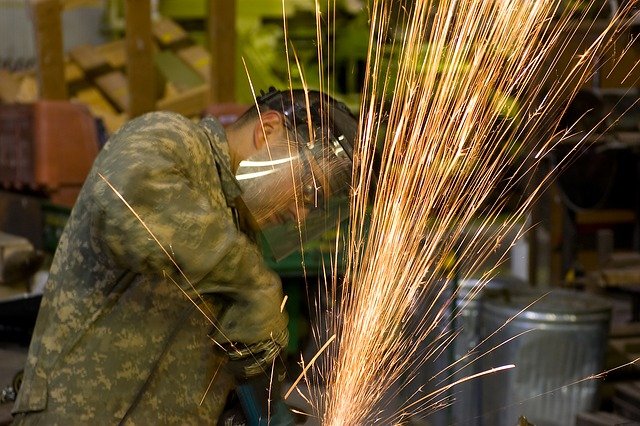Cancer and the construction sector
 By Mark Paterson
By Mark Paterson
Construction accounts for 6 per cent of the UK economy and remains the most dangerous land based work sector. It accounts for almost a third of all workplace fatalities and the largest number of occupational cancer cases. In the following, we look at the prevalence of silicosis and skin cancer in the sector and what employers can do.
Silicosis
More than 2,000,000 workers across the UK are exposed to silica dust on the job and every year over 500 construction workers die from lung cancer caused by this dust, some 10 people each week.
Silicosis is an incurable lung disease caused by inhaling large amounts of silica dust – the basic component of sand and granite rock, usually over a period of many years.
In the future, industry designers, under Construction Design Management Regulations, should be eliminating risks at the design stage and not relying on contractors to deal with these avoidable risks on site. In the meantime, workers need to be aware of the activities that can create airborne silica. This include:
- Sandblasting
- Rock drilling
- Stonecutting
- Drilling
- Brick/block/concrete cutting
- Demolition operations
- Hammering
- Chipping
- Sweeping concrete or masonry
What employers can do:
- Always use the dust control system and keep it well maintained
- For sawing concrete or masonry, ensure workers use saws that provide water to the blade
- During rock drilling use water through the drill stem to reduce the dust in the air
- Use dust collection systems, which are available for many types of dust generating equipment
- Use local exhaust ventilation to prevent dust from being released into the air
- Ensure workers minimise exposure to nearby workers by using good work practices
- Use abrasives containing less than 1% crystalline silica during abrasive blasting to prevent harmful quartz dust from being released in the air
- Measure dust levels in the air
- Do not rely on respirators as the primary method of protection. Ensure dust controls are in place first.
Skin cancer
Skin cancer is the most common cancer in the UK with just under 116,000 new cases reported annually. Construction workers are the most-at-risk group for this type of cancer. The construction industry accounts for 55 per cent of all skin cancer registrations and 58% of all skin cancer related deaths.
Where outdoor tasks cannot be eliminated, it is important to minimise the risk to the worker.
What employers can do:
- Educate workers on the dangers of the sun
- In situations where it is not possible to avoid people working in direct sunlight and shade cannot be provided, consider rotating workers to minimise potential exposure to direct sunlight
- Ensure workers on site are not working topless. Clothing designed for work outdoors in sunny, hot weather should be worn. The clothing should be quick drying, high wicking and have a UV protection rating of 30+
- Hats and neck covers should always be worn. It is worth remembering that 80 per cent of skin cancers are on the head or neck. The fabric should have a UPF of 30+. For those required to wear safety helmets, attachable neck protection should be made available
- Encourage workers to use sunscreen. The sunscreen selected should have a SPF rating of 30 and a UVA four-star rating
- Sunglasses assessed for work should be worn. These should be of a wrap around design to prevent sun creeping in at the sides and should be marked UV400 and offer 100% UV protection
- Encourage workers to take breaks in the shade. Where no natural shade is available, if practicable, canvas shades should be provided
- Encourage workers to regularly check their skin for unusual spots or moles that change size, shape or colour or that start bleeding and to seek prompt medical advice if they are concerned
For more information on health and safety challenges for the construction sector, download QBE’s Protecting Employees on site guide.
 Mark Paterson is senior risk manager at QBE
Mark Paterson is senior risk manager at QBE
Cancer and the construction sector
By Mark Paterson Construction accounts for 6 per cent of the UK economy and remains the most dangerous land based
Safety & Health Practitioner
SHP - Health and Safety News, Legislation, PPE, CPD and Resources Related Topics
New cladding fire risk identified and could be “tip of iceberg”
Company fined £450k and director and site manager sentenced following death of labourer
Huge step towards inclusive PPE as industry body promises to ensure provision


